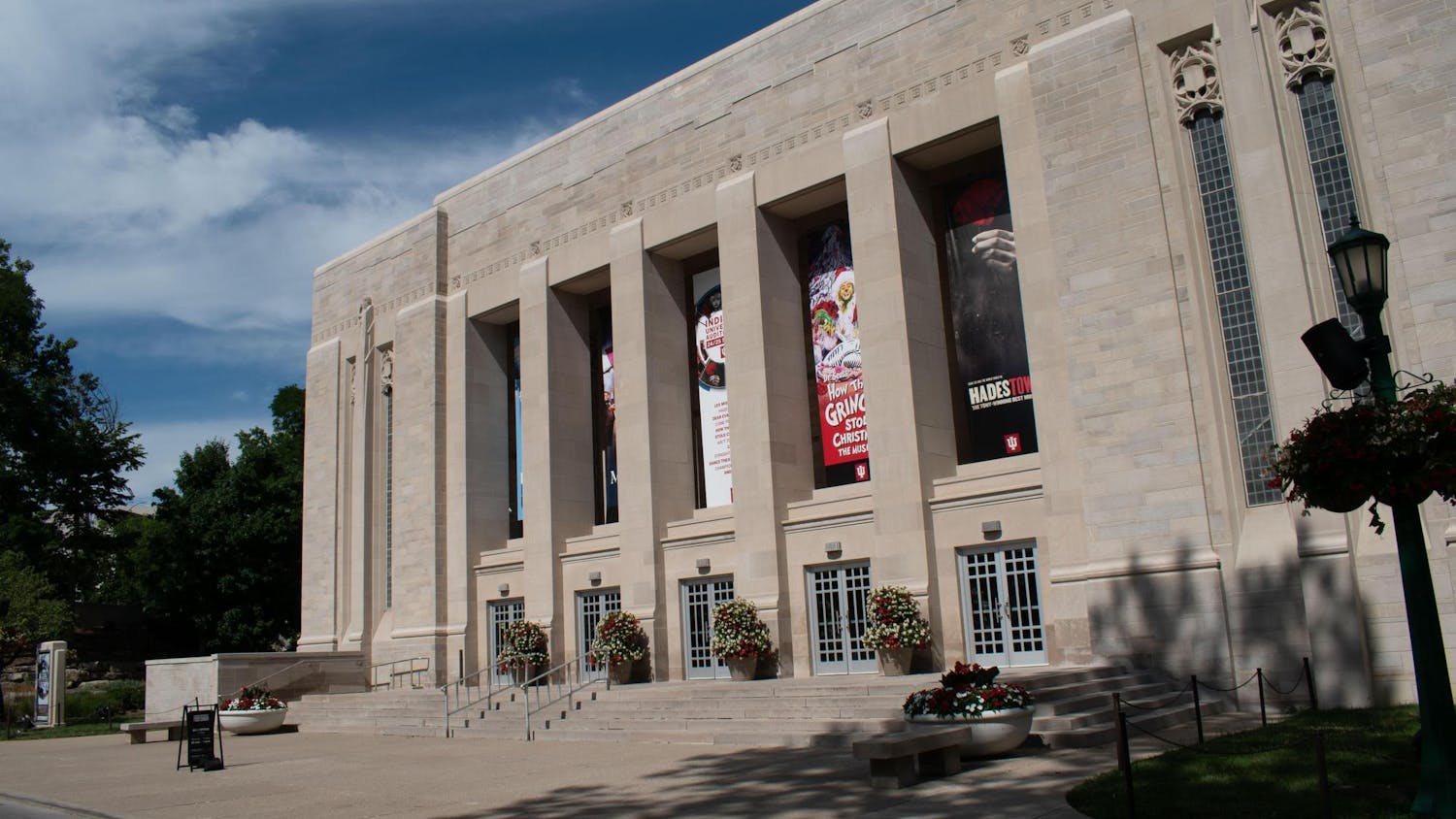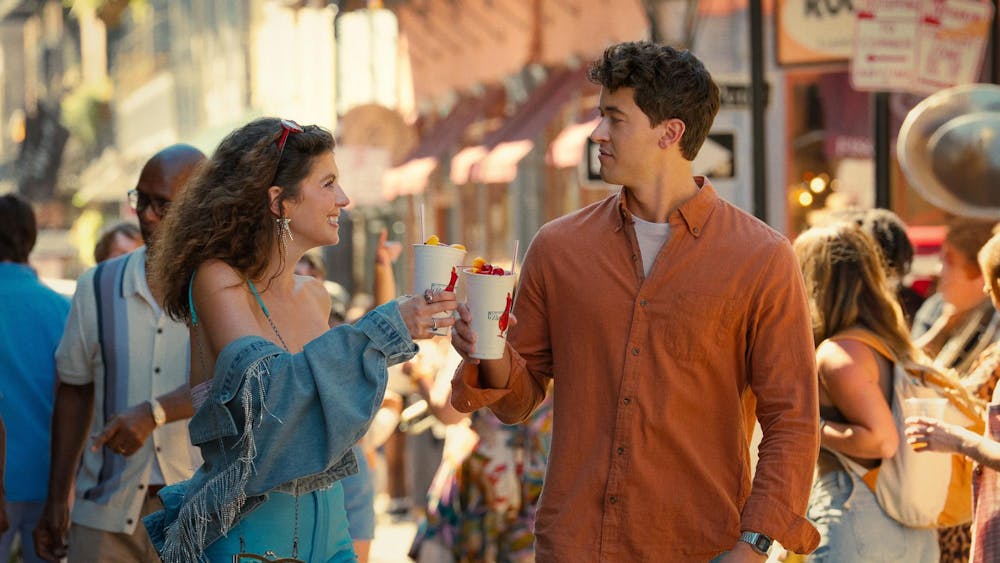Look at a large hole in the ground and picture a towering structure composed of limestone and genius.\nLook at an old neighborhood and some buildings that have seen better days and picture the IU students of 2020 hustling to their classes in the new technological hub of campus.\nLook at IU Architect Robert Meadows and picture the man who turns it all into a reality.\nIn Meadows, one sees the man who holds the structural future of IU's campus in his hands, but he has turned his job into so much more than that. He's not just a man who decides what a building will look like, how it can be made and where it will go; he's also an artist.
Rocks and a dream\nMeadows came to IU in 1996 from New York, where he ran an architectural practice for 30 years. When Meadows arrived at IU, his resume boasted work on the mayor's mansion, the American Museum of Natural History, the Manhattan Supreme Court Building and the Traders Room of the American Stock Exchange.\nThe transition was a smooth one for Meadows: moving from the historical epicenter that is New York City to another, slightly quainter one. His specialty in historic restoration would become a necessity in a place where the 1800s weren't addresses, but rather birth dates of several campus structures.\n"Our role here is to really serve the University mission," Meadows said. "So when a dean or chancellor comes to you with a project, they are no different than a client with a private practice, and your role is to provide professional guidance."\nOffering guidance may seem like a simple enough term for Meadows' responsibilities on campus, but in reality, Meadows serves as more of a painter, in the grandest sense of the word. Meadows stands over an 84 million-square-foot pallet with nothing but some rocks and a dream to work with.\n"Creating the vision, that's the most creative part," he said. "To be able to take something like (a neighborhood), and nobody ever thought about, and say 'This is where we can grow to, and this is what we can make happen, and this is how we can satisfy the needs of the University.'"
From a hole to a whole\nWhen the 2004-05 school year began, IU students arrived to find a gigantic hole gracing the center of the campus. To the students and faculty, the hole was just the beginning of a long period of headaches as they tried to navigate their way from one part of campus to another. But to Meadows, the hole marked the end of his work, for he is an artist who works with the future, not the present.\n"It's a little complicated," Meadows said. "Because you have to kind of look to the future and anticipate what might be built so that what you do today doesn't get in the way of what needs to happen in the future."\nMeadows' work on Multi Disciplinary Science-1, a research, office and teaching facility, is all but done now that construction is underway, and he is already knee-deep in Multi Disciplinary Science-2. But if you look back at the processes of constructing the two buildings, the artistic setting of Meadows' work shines through.\nHe and his staff originally recommended a separate location for the science building, but the science community called for a more centralized location.\n"What they drew, with the amount of space they needed, was this building that was larger than Ballantine," Meadows said. "It was huge, it was ugly and it was pretty devastating."\nThe job of Meadows and his staff was to make beauty out of the beast. IU President Adam Herbert was sympathetic to the science community and its desire for the central location, Meadows said. So the team devised what was virtually an underground building that would connect to all the adjoining buildings. But after analyzing the adjoining buildings and the cost to remove enough rock, the vision turned out to be nothing more than a fairy tale. They would need another building.\n"I think we all realized at this point that, as a research institution, IU really needed to find a place to grow," Meadows said. \nThe team concluded that the most logical place to grow was on the northwest side of campus, across from the current Service Building, along the railroad tracks and 10th Street, all the way to Indiana Avenue.\n"Then we looked at the relationships," Meadows said. "In other words, the people that are going to be occupying this building, what do they need to be close to? And what we found was that about 60 percent of the people that will be in this new building will be psychology-related."\nThe result: One can now find a map of the proposed expansion area for IU in Meadows' office. And located just behind the Psychology Building is a big, brown square that says Multi Disciplinary Science-2.\n"The most obvious example (of Meadows' vision) is his role in creating a master plan for the Bloomington and IUPUI campuses," said Jerry Stuff, senior associate University architect. "They are for 10 and 20 years that guide development of the campus. That is the ultimate vision, and he has had his hand in shaping both of those."
Predicting, conserving, continuing\nIn his book "The Campus as a Work of Art," Thomas Gaines placed IU among the top five most beautiful campuses in the country. But the mission placed upon Meadows has been more than that; he has to extend that beauty to the other IU campuses.\n"I would say that (Meadows) has been very conscious of being able to maintain continuity," said Pat Luzadder, senior associate University architect said. "For instance, in Bloomington, the buildings are limestone, but in Richmond or Southeast you have brick with limestone accent."\nMeadows' job is to predict and project the future of an ever-changing campus while conserving and continuing the vision that was put forth hundreds of years ago.\n"(A campus) is almost like a living organism," Meadows said. "It is growing, expanding, shrinking and changing. And if it doesn't do that, if we don't respond, then it'll die."\nLike a sculptor works with the human body or a playwright works with human emotions, Meadows works with this living organism to bring forward its most beautiful aspects and create a true masterpiece.\n-- Contact Sports Editor Brian Janosch at bjanosch@indiana.edu.





